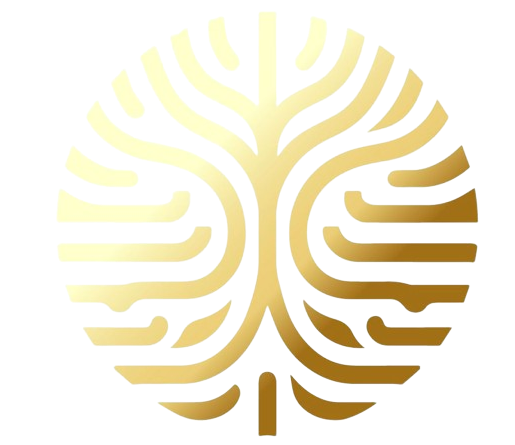Iboga and circadian rhythm resetting: a path to restoring balance
By Troy Valencia
At Root and Wisdom, we understand that modern life often throws our internal rhythms out of balance. Whether it is the toll of shift work, jet lag, or long-term sleep disturbances, disruptions to our circadian rhythms—our body’s internal biological clock—can significantly impact overall well-being. Traditionally regulated by the suprachiasmatic nucleus (SCN) in the hypothalamus, our circadian rhythms are sensitive to external cues, primarily light and darkness, synchronizing with the natural 24-hour light-dark cycle (Aronson et al., 1993). When these rhythms become disrupted, they can lead to a range of health issues, from insomnia to mood disorders.
The Science Behind Circadian Rhythms and Iboga
Iboga, a sacred African plant, has long been used in traditional spiritual rituals, but emerging research points to its unique ability to reset disrupted circadian rhythms. Much like therapies that use bright light or melatonin to help recalibrate the body’s internal clock, Ibogaine, the active alkaloid in Iboga, influences critical neurotransmitter systems—especially serotonin and melatonin—to restore balance to the SCN (Arendt et al., 1995). These neurotransmitters are critical for regulating sleep-wake cycles, and Iboga’s modulation of these systems suggests it may serve as a potent tool in managing circadian misalignment.
Disruptions to circadian rhythms occur when the SCN becomes desynchronized with environmental cues, known as zeitgebers. Jet lag, shift work, and irregular sleep schedules are common culprits. However, Iboga offers a novel approach to address these disruptions by influencing the brain’s neuroplasticity. This allows for reorganizing neural pathways involved in sleep regulation, offering a potential “reset” effect on the brain (Boulos et al., 1995).
Iboga’s Role in Resetting the Internal Clock
By modulating serotonin, the precursor to melatonin, Ibogaine influences the SCN’s sensitivity to zeitgebers, much like bright light therapy. These interventions are commonly used to treat conditions like Seasonal Affective Disorder (SAD) or jet lag, but Iboga offers an alternative pathway to circadian rhythm restoration for those facing profound misalignment. Its ability to reset circadian rhythms can be particularly beneficial for individuals who suffer from chronic sleep issues or face challenges due to shift work or frequent travel across time zones (Drake et al., 2004).
Root and Wisdom: Iboga Retreats for Circadian Rhythm Balance
Our Iboga retreats are designed to help participants restore their natural balance. We integrate traditional plant medicine practices with modern neuroscience to provide a holistic approach to healing. By harnessing the power of Iboga and its profound influence on circadian rhythms, our retreats offer a space for individuals to reset their internal clocks, improve their sleep patterns, and restore overall well-being. This is something we have seen often, where specific individuals with sleep issues come in and fall asleep during the ceremonies despite the stimulatory effects of Iboga. Whether you are dealing with jet lag, shift work, or chronic sleep disruptions, Iboga’s unique impact on the brain may provide the key to restoring your circadian alignment.
Call to Action
If you are struggling with circadian misalignment and want to explore how Iboga can help restore your internal rhythms, consider joining us for an Iboga retreat or send a message to speak with me directly. Learn more about how this influential African plant teacher can help reset your circadian clock and improve your overall well-being.
References
Arendt, J., Skene, D. J., Middleton, B., Lockley, S. W., & Deacon, S. (1995). Efficacy of melatonin treatment in jet lag, shift work, and blindness. Journal of Biological Rhythms, 10(2), 167–179.
Aronson, B. D., Bell-Pedersen, D., Block, G. D., Bos, N. P., Dunlap, J. C., Eskin, A., Garceau, N. Y., Geusz, M. E., Johnson, K. A., Khalsa, S. B., Koster-Van Hoffen, G. C., Koumenis, C., Lee, T. M., LeSauter, J., Lindgren, K. M., Liu, Q., Loros, J. J., Michel, S., Mirmiran, M., … Zatz, M. (1993). Circadian rhythms. Brain Research Reviews, 18(3), 315-333.
Boulos, Z., Campbell, S. S., Lewy, A. J., Terman, M., Dijk, D. J., & Eastman, C. I. (1995). Light treatment for sleep disorders: Consensus report. VII. Jet lag. Journal of Biological Rhythms, 10(2), 167–176.
Dijk, D. J., Boulos, Z., Eastman, C. I., Lewy, A. J., Campbell, S. S., & Terman, M. (1995). Light treatment for sleep disorders: Consensus report. II. Basic properties of circadian physiology and sleep regulation. Journal of Biological Rhythms, 10(2), 113–125.
Drake, C. L., Roehrs, T., Richardson, G., Walsh, J. K., & Roth, T. (2004). Shift work sleep disorder: Prevalence and consequences beyond that of symptomatic day workers. Sleep, 27(8), 1453–1462.
